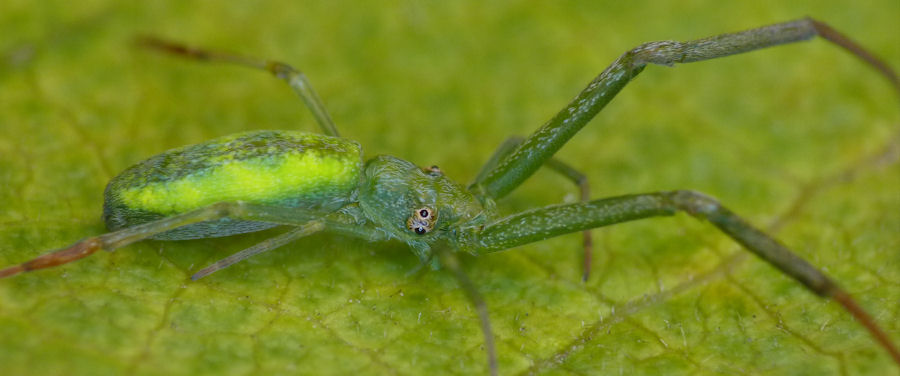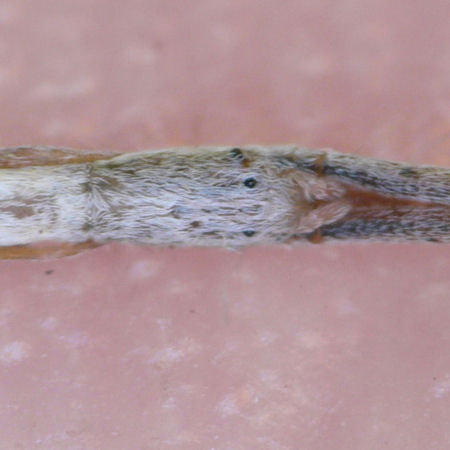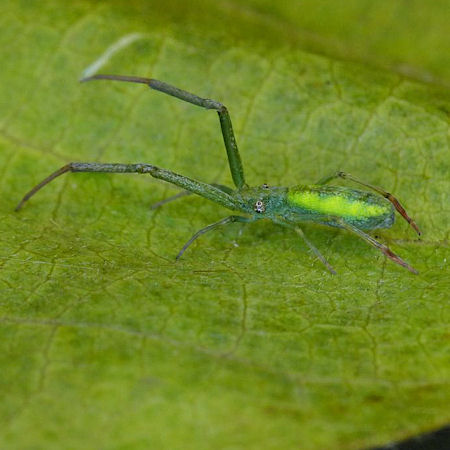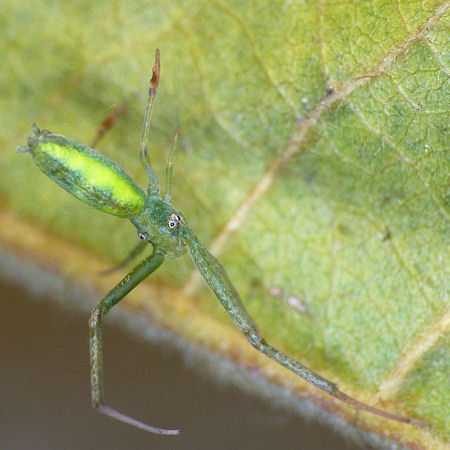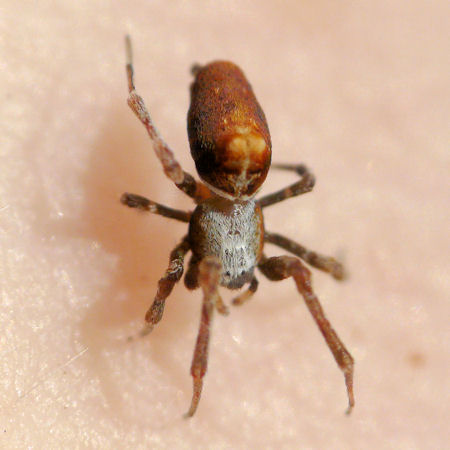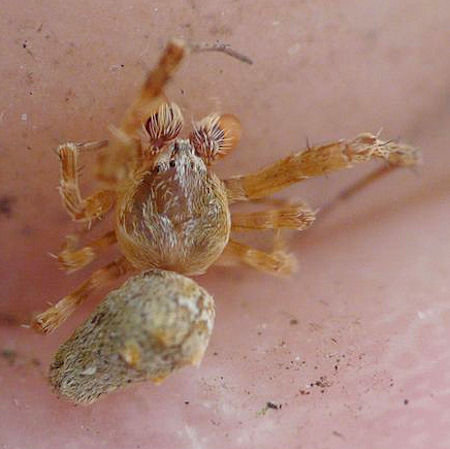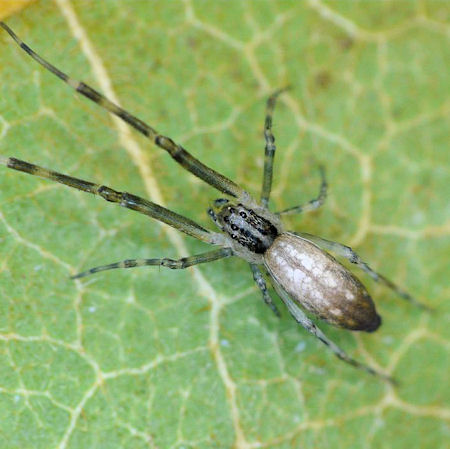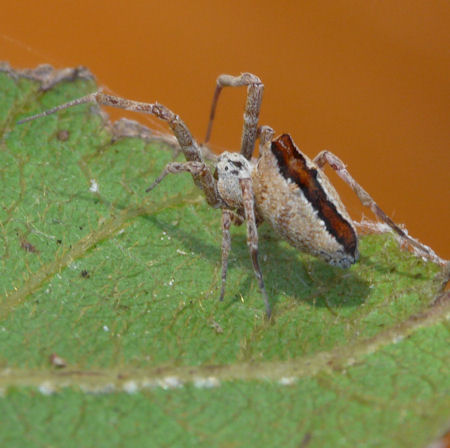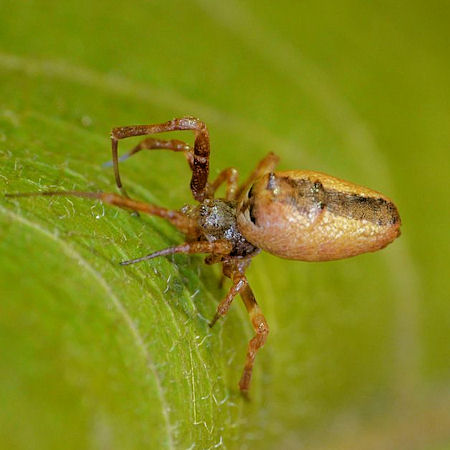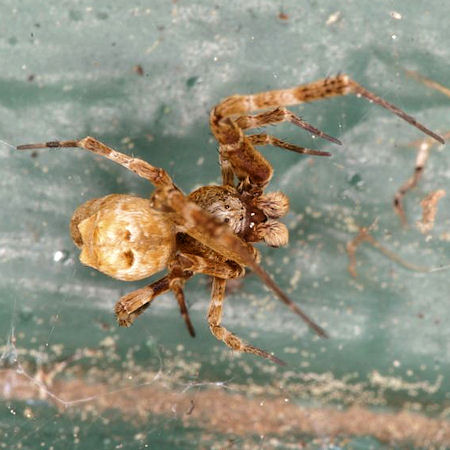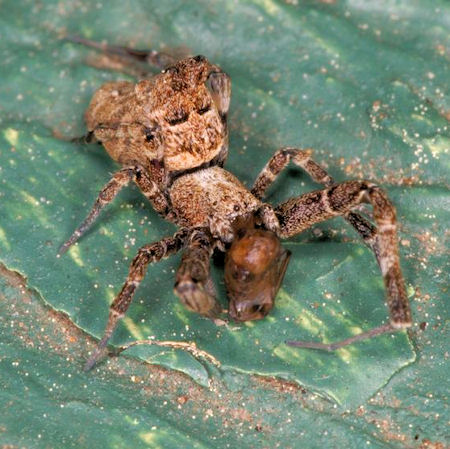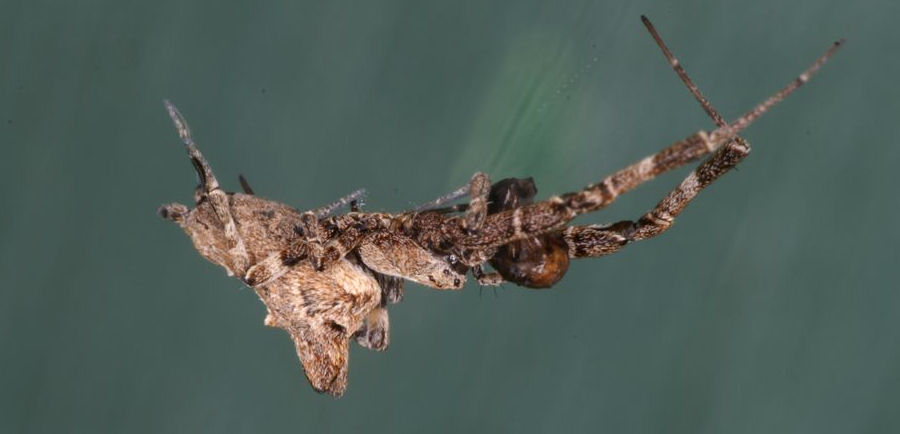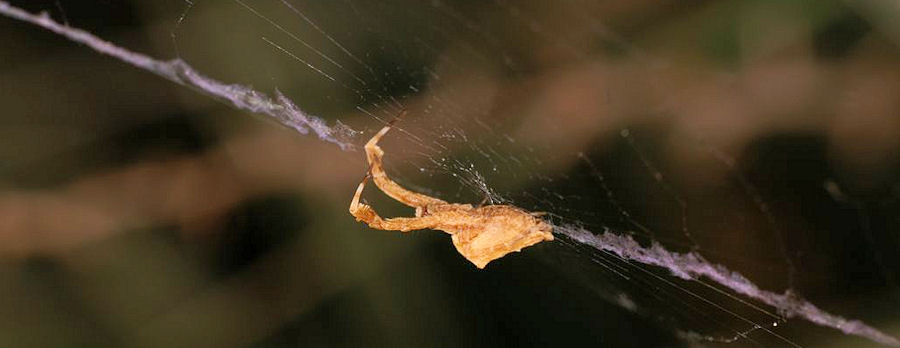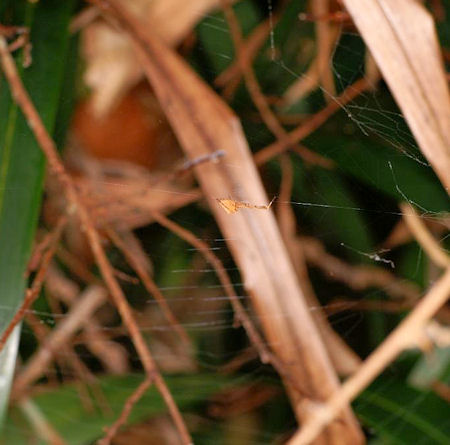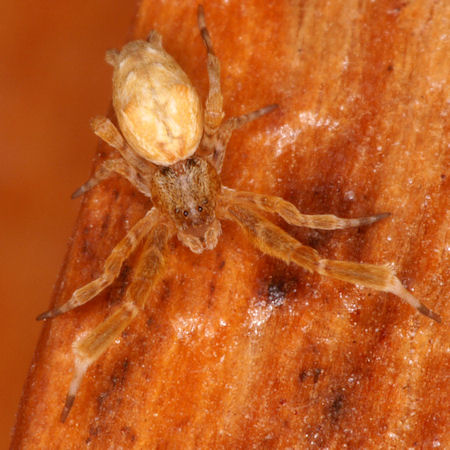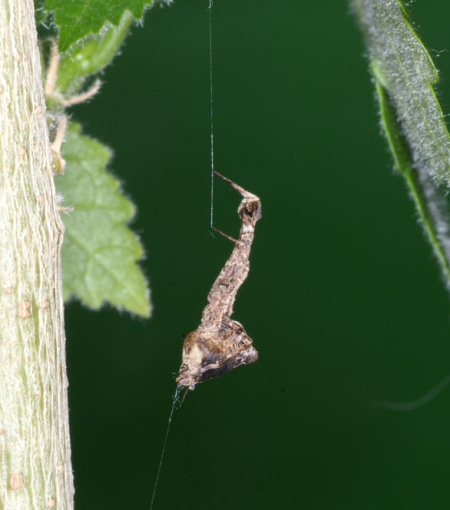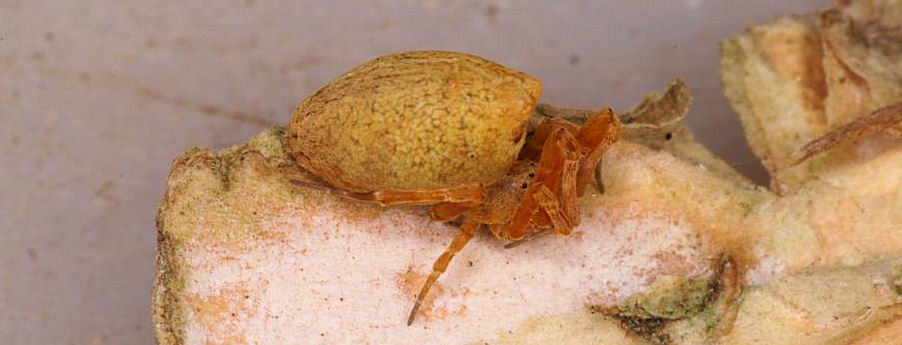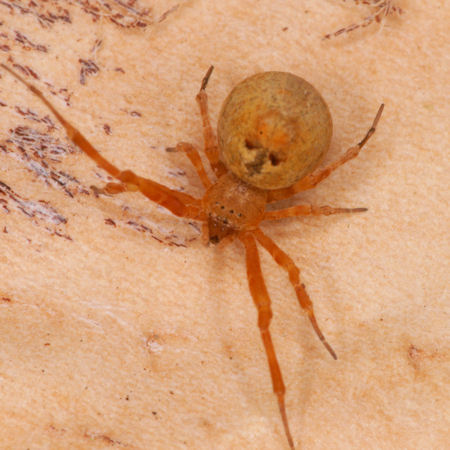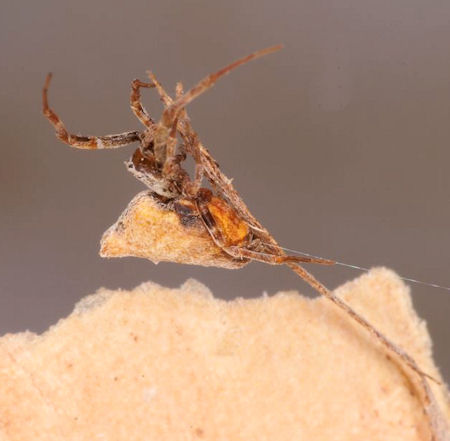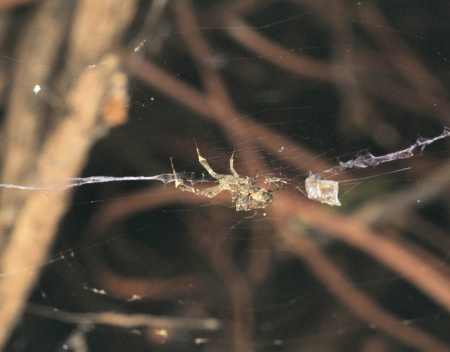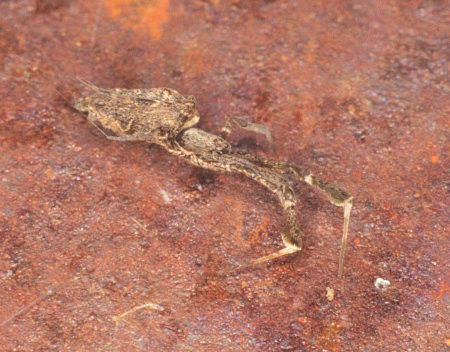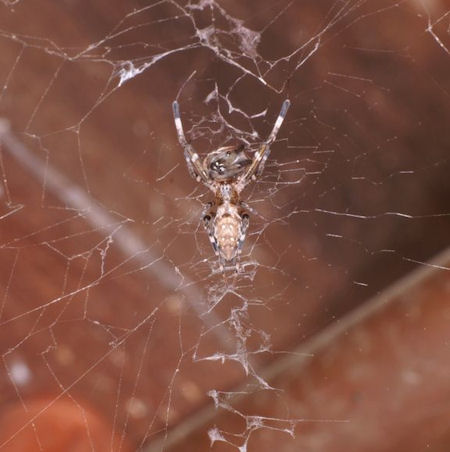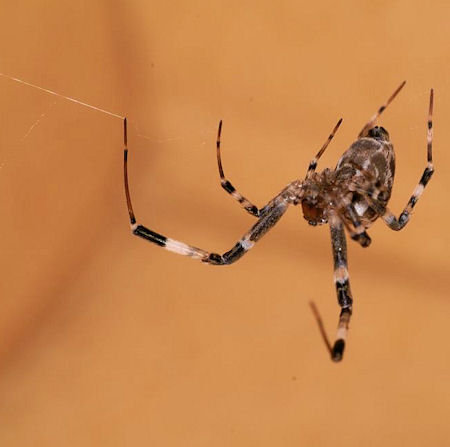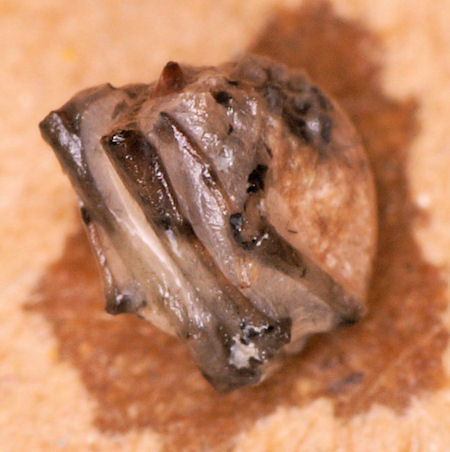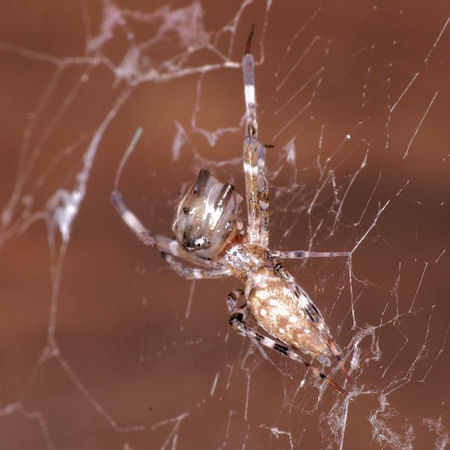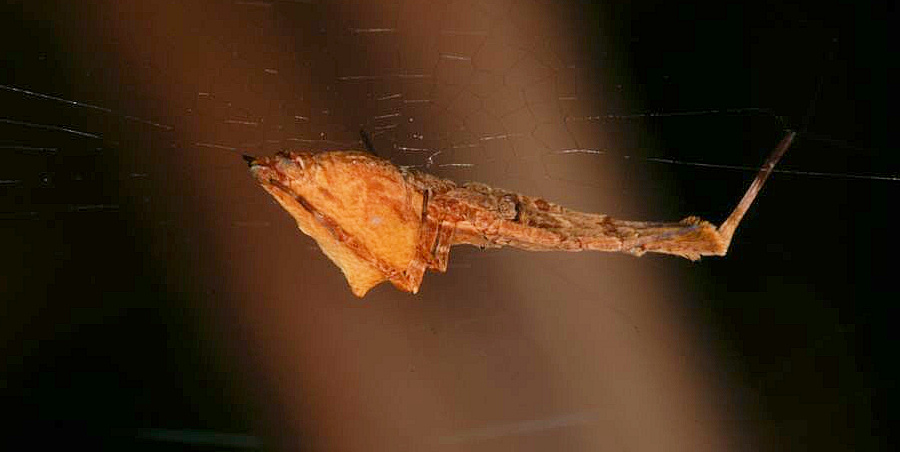
Uloborus barbipes
Uloborid spiders are unusual in having no poison glands. They rely
completely on wrapping their prey in silk. The spider belongs to the
cribellate spider group because they comb the silk to fluffy wool.
The web they construct is an incomplete wheel web and looks a little clumsy
and asymmetrical. The web is usually built horizontal. Some species use a
single line to catch prey.
Special features of the web are the hub, which is closely and beautifully
meshed, and the ribboned decorations or stabilmenta that ornament the orb
and possibly add to its strength.
Different variations are observed, V-shaped, four ribbons forming a cross,
broken or complete circles around the hub.
In position the spider lies stretched out beneath the hub of her web, her
legs directed forward and backward forming a bridge between the stabilmenta
and make a complete band across the snare. As she hangs there, she often
resembles a stick or a leaf.
When the eggs are laid the elongate sacs are laid in a row across the web
and then aligns her long body so that she becomes almost indistinguishable
from them.
The Uloboridae can be found in large social groups together in hollow
trees, under houses or beneath rock ledges. Their snares may be tangles
together with the webs of the other spiders.
The spiders rarely exceed a body length of 12 mm and are distinguished by
their very long, often curved, forelegs.
In Australia six different genera can be found with 13 described species.
